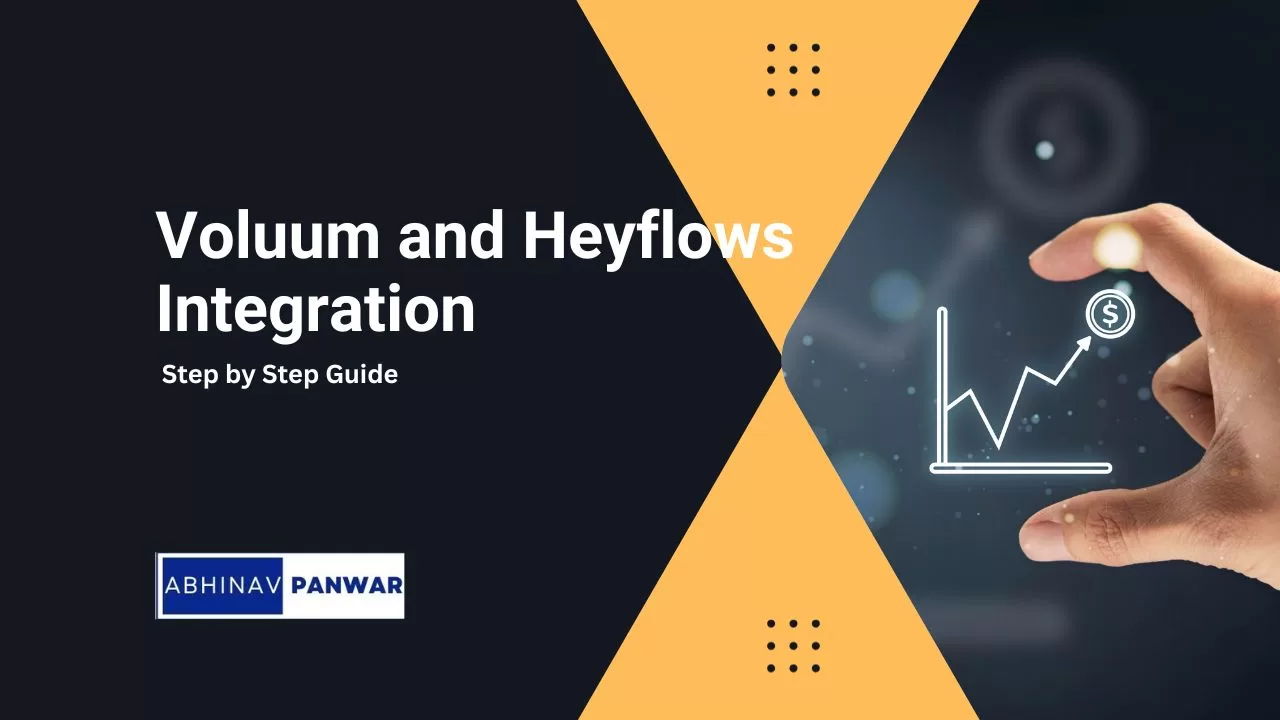Here is the guide to integrating Voluum with Heyflow, step by step. Both tools are powerful in their respective fields—Voluum for ad tracking and Heyflow for creating interactive flows and forms. As of my last update, you will typically integrate the two platforms through webhooks or a direct API connection if available. Let’s get started:
Step by Step Guide on Integrating Voluum with Heyflow
Step 1: Set Up Your Voluum Account
Inc case you don’t have voluum account you can sign up through our affiliate link – Click here
Before integrating, ensure that you have an active Voluum account.
- Log in to your Voluum account.
- Navigate to the ‘Settings’ to find your API credentials. You will need these to set up the integration.
- Keep your API key secure as you’ll need it later to establish the connection.
Step 2: Create a Flow in Heyflow
Set up the flow that you would like to integrate.
- Log into your Heyflow account.
- Click on ‘Create new flow’ or select an existing flow to edit.
- Customize your flow according to your needs.
Step 3: Set Up a Webhook in Heyflow
Heyflow usually allows for data to be sent to other platforms via webhooks.
- In the Heyflow editor, click on the ‘Integrations’ tab.
- Select ‘Webhooks’ from the integration options.
- Enter the URL where you want to send the data. You will generate this URL from Voluum in the following steps.
Step 4: Create a Custom Webhook URL in Voluum
Voluum can accept incoming data through custom Webhook URLs.
- In Voluum, go to ‘Automizer’.
- Click on ‘Webhooks’ and then on the ‘New webhook’ button.
- Name your webhook for easy identification.
- Copy the webhook URL provided by Voluum.
Step 5: Link Heyflow with Voluum
Link both platforms using the webhook URL from Voluum.
- Go back to Heyflow and paste the webhook URL from Voluum into the designated field.
- Map the data fields in Heyflow with the corresponding fields in Voluum. Make sure that all necessary data points (like click ID, conversion status, etc.) are correctly matched.
- Save your settings in Heyflow.
Step 6: Test the Integration
It is always important to ensure that the data is being transmitted correctly.
- Submit a test entry in your Heyflow.
- Check in Voluum if the data is received. You may need to wait a few minutes or check the logs for the webhook activity.
Step 7: Monitor and Troubleshoot
After testing, monitor the data flow for a period to ensure all is working as expected.
- Check for consistent data transfer in the Voluum logs.
- If data isn’t coming through, recheck your webhook URL and data mapping.
Step 8: Optimize and Scale
With the integration set up, start using the data to optimize your campaigns.
- Analyze the data coming into Voluum for insights.
- Use these insights to make informed decisions on your marketing strategies.
Conclusion
Integrating Voluum with Heyflow can streamline your data analysis and campaign management, making your marketing efforts more effective. Always refer to the latest documentation for each platform for any updates or changes to the integration process.
Remember to comply with data protection regulations when transferring personal information, and keep your data mappings updated if there are changes in the forms or the data you need to track.
By following these steps, you should be able to successfully integrate Voluum with Heyflow and begin leveraging the strengths of both platforms in unison.
